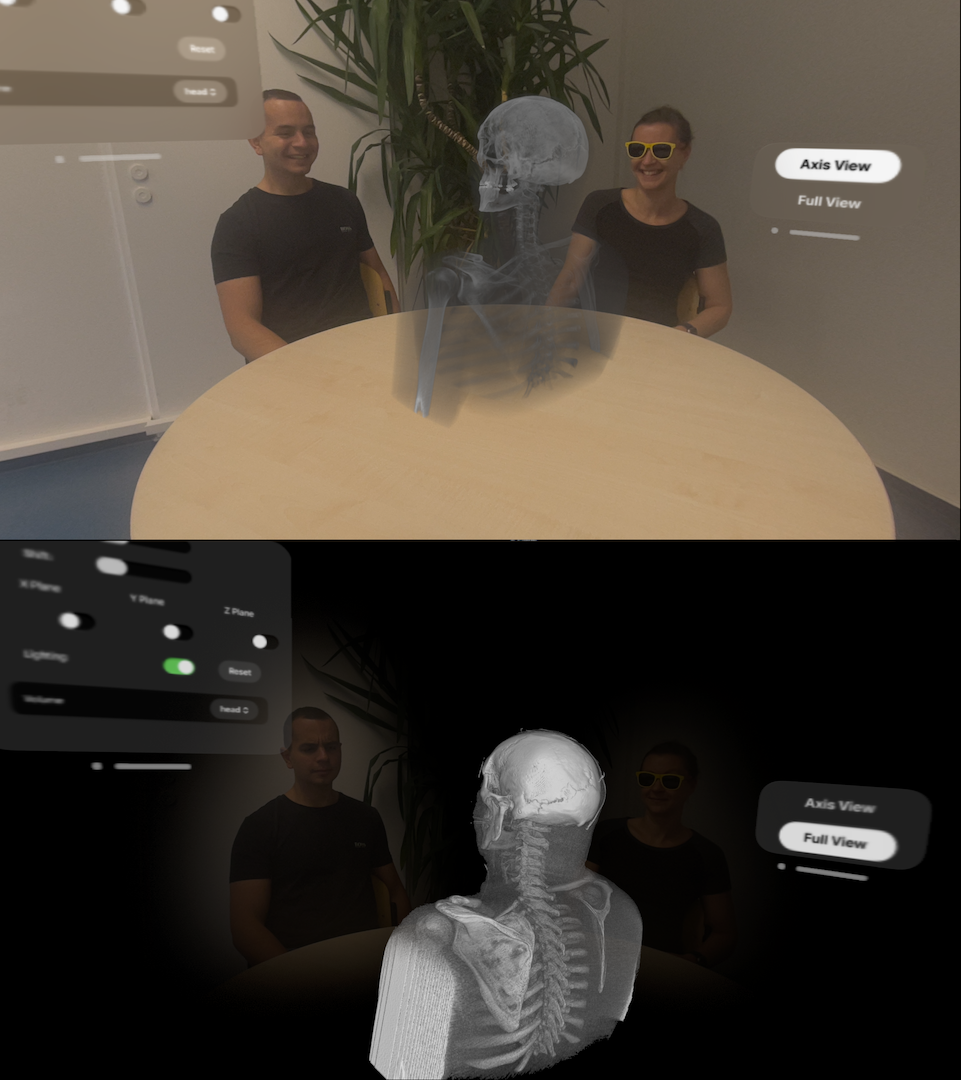Investigating the Apple Vision Pro Spatial Computing Platform for GPU-Based Volume Visualization
Camilla Hrycak - University of Duisburg-Essen, Duisburg, Germany
David Lewakis - University of Duisburg-Essen, Duisburg, Germany
Jens Harald Krueger - University of Duisburg-Essen, Duisburg, Germany
Download preprint PDF
Room: Bayshore VI
2024-10-16T16:18:00ZGMT-0600Change your timezone on the schedule page
2024-10-16T16:18:00Z

Fast forward
Full Video
Keywords
Apple Vision Pro, Volume Rendering, Virtual Reality, Augmented Reality
Abstract
In this paper, we analyze the Apple Vision Pro hardware and the visionOS software platform, assessing their capabilities for volume rendering of structured grids---a prevalent technique across various applications. The Apple Vision Pro supports multiple display modes, from classical augmented reality (AR) using video see-through technology to immersive virtual reality (VR) environments that exclusively render virtual objects. These modes utilize different APIs and exhibit distinct capabilities. Our focus is on direct volume rendering, selected for its implementation challenges due to the native graphics APIs being predominantly oriented towards surface shading. Volume rendering is particularly vital in fields where AR and VR visualizations offer substantial benefits, such as in medicine and manufacturing. Despite its initial high cost, we anticipate that the Vision Pro will become more accessible and affordable over time, following Apple's track record of market expansion. As these devices become more prevalent, understanding how to effectively program and utilize them becomes increasingly important, offering significant opportunities for innovation and practical applications in various sectors.